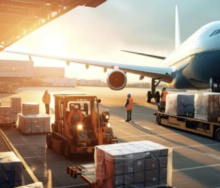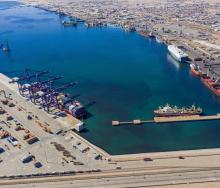Transnet Freight Rail (TFR) has ramped up from 21 to 28 the number of GF-class coal trains moving cargo to the Port of Richards Bay every week, the rail division announced on Thursday.
TFR said it had increased the number of trains hauling cargo to the port as part of Transnet’s Recovery Plan and to keep its commitment to the City of uMhlathuze and port users during a stakeholder collaboration on truck congestion solutions in November 2023.
“The main objective of the ramp-up was to reduce truck loads and migrate volume from road to rail. All Transnet customers that were road hauling to the port of Richards Bay at the time were identified and approached directly to indicate interest in participating in a test train service,” TFR said in a statement.
The purpose of the test was to enable Transnet and its customers to assess train loading capabilities and the rail friendliness of their cargo.
It focused on siding capabilities and readiness; cargo suitability for rail loading; status of the network; train handling times and train turnaround times.
TFR acting managing executive for the North Corridor, Theo Johnson, said the test train initiative had seen 106 000 tonnes of cargo moved from road to rail as at March 31.
He said this equated to removing approximately 3 100 truckloads from the roads, which represented 6 200 truck movements, including the empty leg of the journey.
“To date seven customers, a majority of whom were 100% on road before, have been tested. The process to test the remaining customers is ongoing, subject to available capacity on a week-by-week basis,” Johnson said.
The test train initiative was offered with the clear proviso that it did not constitute a commitment for rail capacity in the long term, as there are structured ongoing processes for capacity allocation.
The train ramp-up is the latest positive development after the coal export conveyor belt, which had been out of service for two years due to fire damage, came back into full operation at Richards Bay terminals, according to Transnet Port Terminals (TPT).
The belt has taken more than 400 trucks off the road after it was commissioned following rigorous testing at the end of December. It was among three belts that were gutted by fire in October 2021. The 2.2-kilometre-long conveyor belt has an output of more than three million tonnes per year.
Procurement processes to repair the remaining two belts are at an advanced stage.













